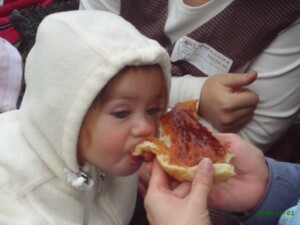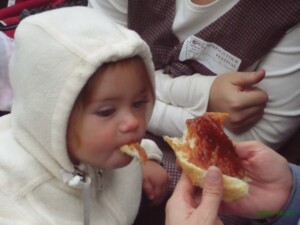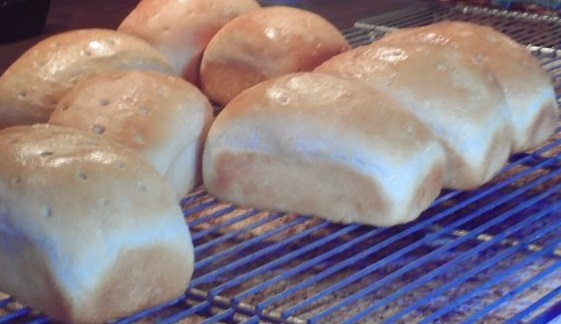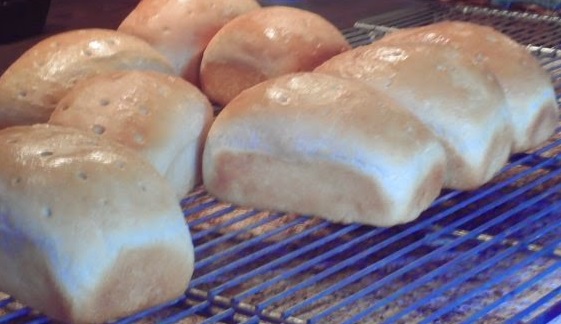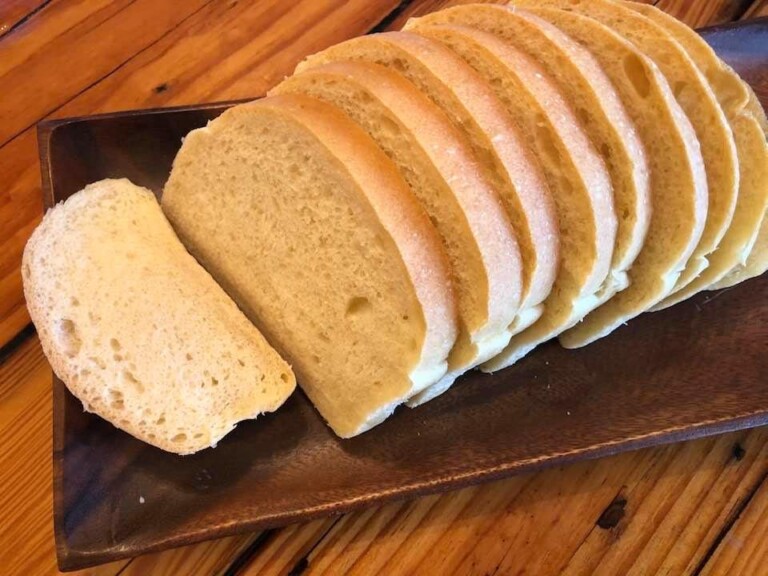Homemade, Hearthside Memories
Hearth
In archaeology, a hearth is a firepit or other fireplace feature of any period. Initial usage refers to a place of warmth, heat, or fire, or ‘heat of earth’.
There’s nothing like homemade bread baked in an outdoor oven. On rainy days, there’s nothing like the warmth from that hearthside!
I’m going back home again. It’s the changing-of-the-leaves time. It’s apple cider and apple butter time. It’s Springs Folk Festival time, and I wouldn’t miss it for the world.
It’s true that I’ve already seen the hundreds of displays, crafts, and craftsmen at this Festival. I’ve watched glass blowing, log hewing, sheep shearing, horses on a treadmill, and women quilting. I’ve listened to fiddle-playing in the woods, seen apple–butter–making over an open fire, and sat in the building where a play is performed or various groups and families sing and play a diverse assortment of instruments, music and songs.
Plus, I have purchased my share of relics and crafts to use in my home or as gifts. Yet while I’ll enjoy walking the trail and maybe hitching a ride on the hay wagon, I’m really heading home for one reason: to help bake home-mixed, homemade bread in an outdoor oven.
The difference of homemade
I am partial to homemade bread. It’s true that I’ve developed my own repertoire of recipes that can bring down the house. Yet when it comes to homemade, there’s nothing quite like the flavor of a slice of fresh bread that’s been baked in an outdoor oven heated with coals fired from wood.
Trust me. I grew up with a bakery in the house and recognize that bread is a specialty all its own. Couple that hearth-bread flavor with real home-churned Jersey cow butter and Beachy’s homemade apple butter, and you’ve got a taste with homemade flavor like no other.

Homemade ice cream

It certainly helps that I get to work for and with my sisters and family members. It helps that, just down the path, is homemade ice cream I get to eat free ’cause it’s made by my brother Allen, who developed his own ice cream mix and invented his own equipment to churn out the best homemade ice cream in town.
We smile because the weather affects both of our sales: if it’s a warm, sunny day, the ice cream gets sold out. If the temperatures are low or it’s rainy, folks stand around our booth with the outdoor oven to get warm. One booth or the other is always doing well come Folk Festival day.
As teenagers, we helped in our mother’s bakery as her mixer kneaded sixty-pound tubs of dough to make two-pound loaves of bread. In earlier Festival years, we helped sell Mrs. Miller’s Homemade Bread at the Festival, and it seemed that people snatched it up more quickly when they learned that this bread came from our home and that it was made by our mother and that we ourselves had helped. They believed us, for we could explain the procedure step by step and answer all their questions. I like to think they also believed us because of the evident pride and excitement in our product.
So when I go back home to help in the booth that is run by my sisters, there is again that sense of pride and excitement in this project because we are family. I get to visit with nieces and nephews and their children; I get to rub shoulders with my own kids and my siblings.
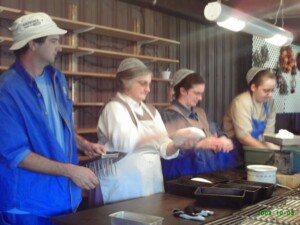
Two of my sisters began managing the bread booth at the Folk Festival one year after our mother closed her bakery. They are assisted by their families, other siblings (one of them is me) and their offspring. It comes naturally and easily – as naturally as yeast causes bread to rise, as easily as kneading dough after fifty years’ experience, as readily as customers standing in line, waiting for the next batch to come out of the oven.
Our father had his own batches of children. Born of different mothers, his first and second batch are different. The five sons and four daughters from his first wife are known as the first batch. The six daughters from the second wife are the second batch. (I belong to the second batch.) Even today, grandchildren and great-grandchildren ask for explanations and are given answers by explanations as to which batch a person belongs.

While this outdoor oven has been in use at this Festival since 1987, this will be the fourteenth year that my family is baking the bread. Each year, the demand increases. Last year 2232 loaves of bread were mixed, shaped, baked and sold in less than forty hours. That’s 84 batches of bread dough. My family, known as Miller, often refers to and does things in batches.
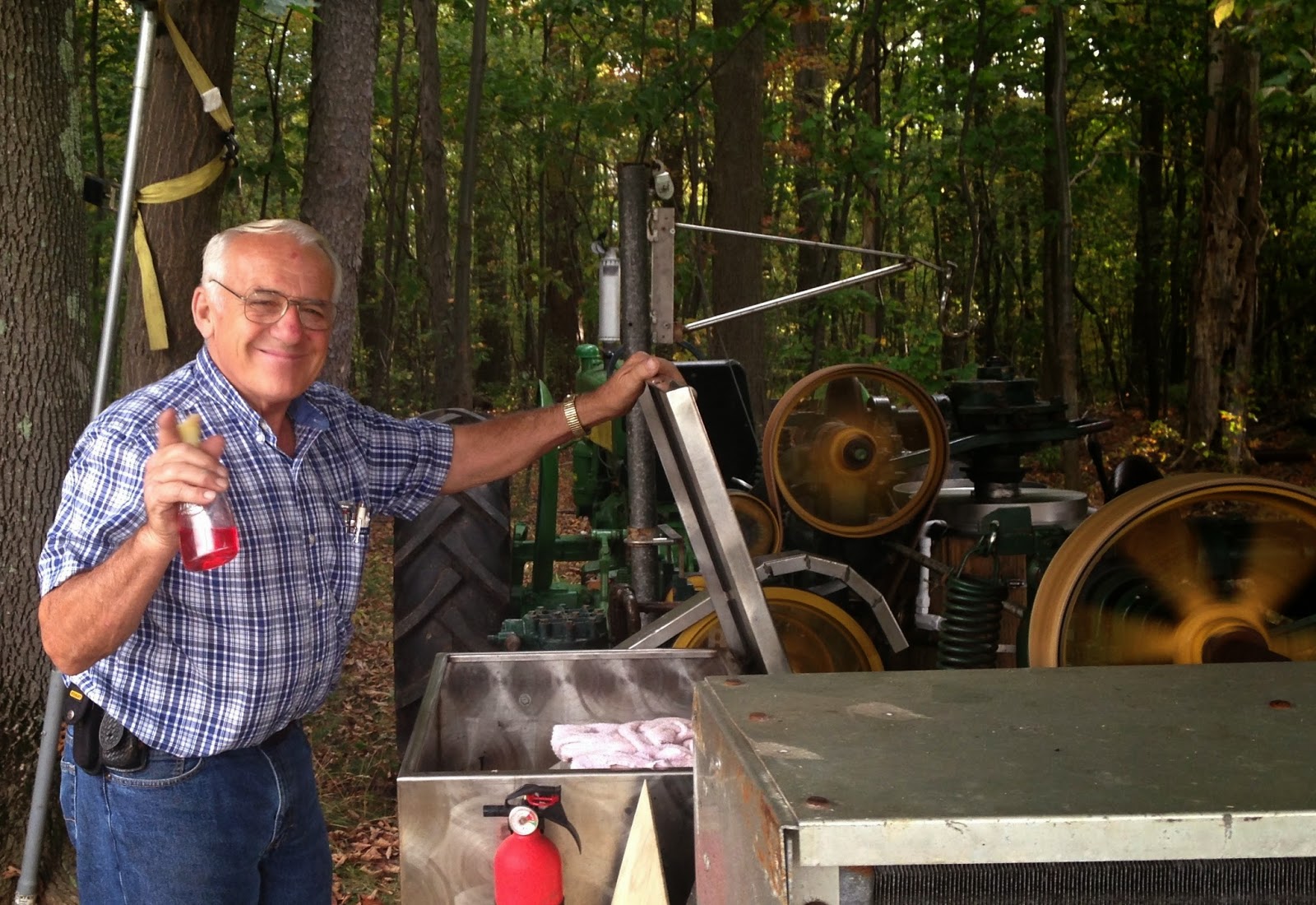
Allen, our ice-cream-maker brother, is the youngest son of the first batch. We his sisters come from both the first and the second batch and manage the bread booth within sight of the ice cream stand. Bread and ice cream are shared freely among family all day long, and it doesn’t matter from which batch you’ve come: you qualify because you’re family. [You can hear from Allen about his machine here.
It is doubtful that my sisters would have undertaken the outdoor oven project had they not had experience in our mother’s bakery. Year after year, baking bread for the Folk Festival was the main Bakery event of the year. Forty-five years after the Bakery was founded, our mother stopped the mixer and closed the oven doors for the last time. How many batches, how many loaves of bread were mixed and baked in that room?! On normal weeks, five or six hundred loaves of bread were delivered in stores.

During the Springs Folk Festival week, approximately 2,000 were baked and sold with the help of both batches of my father’s children.
My sisters founded Bread from the Hearth in 2001, continuing the Festival tradition with this oven that was built solely for making bread during the Folk Festival. They followed the families of Yoder and Brenneman, who passed the bread recipe from one “owner” to the next. While baking bread was nothing new to my sisters, doing it in an outdoor oven is certainly different than it was mixing and baking homemade bread within the bakery of our home.
That first year, each of us in the second batch came home (from Canada, Nebraska, and Virginia) to help our sisters who live in Maryland. Siblings from the first batch helped as well. Some of us brought our children.

Our mama, who was probably missing her own bakery, helped serve sliced bread. Fourteen years later, the tradition runs strong.
Rachel and Alice hold responsibility for the Bread from the Hearth booth. Alice and her husband Bernard arrive in the middle of the night, in time to put the first loaves into the oven (which has been fired since before midnight), and stay for the remainder of the day.

Bernard mans the outdoor oven and adds wood or kindling as needed, keeping a close eye on the temperature and making certain heat is distributed evenly throughout the oven. He handles the metal racks holding seven to eight loaves of bread, putting them in and taking them out of the oven. Rachel helps run the booth throughout the day and tries to make sure we all get our breaks so we can be back during the busiest time.

Katharine (now in her late seventies) begins mixing bread at midnight and stays until the sun is up and more help has arrived. We consider her the unofficial expert, and she finds ways to fix mistakes during the batch-mixing like nobody else can.
Over the years, grand-children (and now great-grandchildren), have visited with each other from Indiana, Maryland, Nebraska and Virginia as they work at the dough table weighing bread, shaping loaves, and serving sliced bread or selling loaves at the front of the booth. Sometimes it’s rainy and cold, and we vie for spots nearest the oven so we can stay warm. Other years we swelter and stay as far from the oven as we can.

Each year, we come home (or wish we could!) to continue a tradition that evokes memories of our childhood and younger years. We come home to work together again and bake bread in an outdoor oven modeled after the one built by our great-grandfather over 140 years ago.
As dough rises, loaves are shaped and pricked, bread is baked, and customers line up again, we continue to do what we learned well in the bakery at home over half a century ago.
Though the setting has changed and geographies separate us, we come home to work together, make and bake bread, visit and reminisce, connect with each other’s children, and make memories as we continue a tradition.
When the Festival is over, the oven coals are scattered in the firebox and the glow from the embers fades. The door of the oven is latched and the hearth is swept clean. When another Festival is over, the texture of time, the taste of home, and the aroma of memories will linger. No matter which batch we are from, we are family. Together, we taste and enjoy the timeless beauty, texture, and warmth of homemade.
PHOTO GALLERY
PHOTO CREDITS: Glen Beachy, Marla Miller, Rachel N. Miller, Gertrude Slabach, Rebekah Slabach, Springs Historical Society
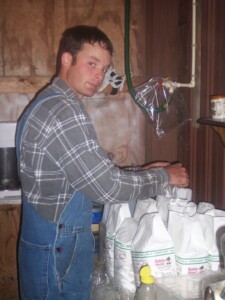

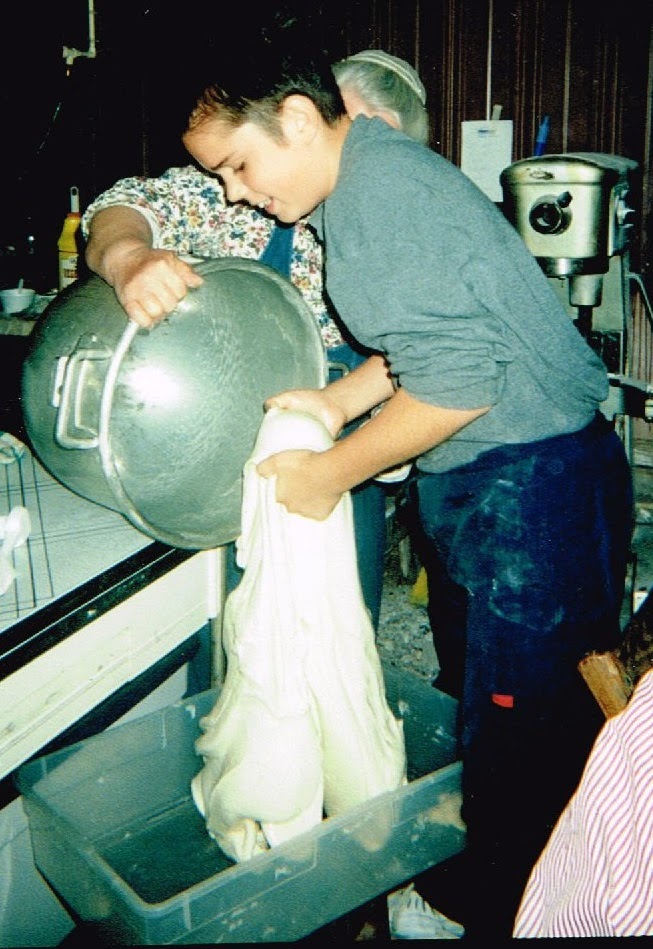




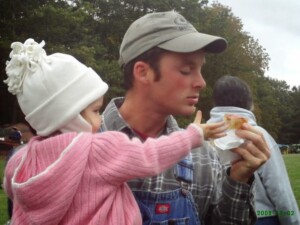

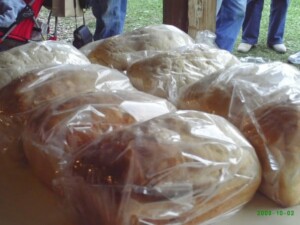

Training ’em young: Rebecca Miller from Nebraska (4th generation) savors each bite.
